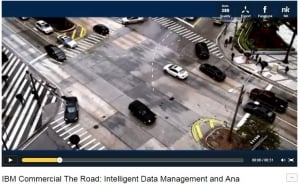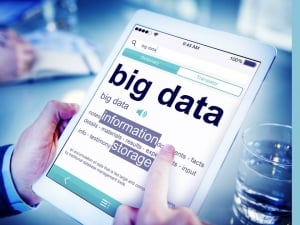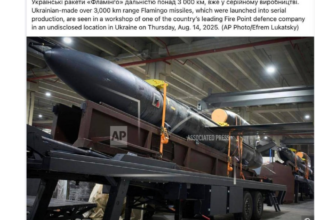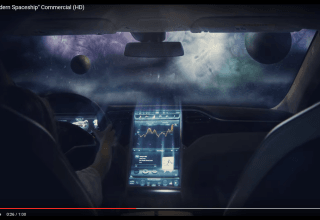Niespodziewanie dla mnie otrzymałem pod koniec roku zaproszenie od Centrum Promocji Informatyki do wygłoszenia wykładu na temat BIG DATA w strategii marketingu produktów. Jak tylko zobaczyłem temat to nie ukrywam, że radość moja była ogromna. Wreszcie i nareszcie ktoś w Polsce zaczyna widzieć potencjał dużych zbiorów danych, potencjał który od lat jest wykorzystywany z sukcesem przez zachodnie korporacje.
Przygotowując się do konferencji poszukując materiałów, źródeł w polskich publikacjach (potrzebowałem lokalnych przykładów stosowania Big Data), znaleźliśmy sporo artykułów, komentarzy, a nawet publikacji. Jednakże zgłębiwszy temat daje się zauważyć, że jest to obszar nadal nie stosowany lub wręcz pomijany w działaniach marketingowych. Dlaczego? W pierwszej kolejności brakuje wiedzy na temat stosowania Big Data, dwa trudno znaleźć polskie narzędzia (firmy) do obsługi wielkich baz danych a po trzecie, to jest nowe – a duża część marketerów nowego nie lubi.
Zatem co to jest Big Data?
Definicja powstała w 2001 r., zmodyfikowana w 2012 przez META Group (obecnie Gartner) – Zbiory informacji o dużej objętości, dużej zmienności lub dużej różnorodności, które wymagają nowych form przetwarzania w celu wspomagania podejmowania decyzji, odkrywania nowych zjawisk oraz optymalizacji procesów.
McKinsey – Zbiór danych, których rozmiar przekracza możliwości klasycznych narzędzi do składowania, analizy i zarządzania danymi.
IBM – podkreśla warunek różnorodności danych i szybkości ich zbierania i przetwarzania.
Big Data w reklamie IBM
„Czy odważyłbyś się przejść przez ulicę pełną samochodów na podstawie fotografii zrobionej pięć minut wcześniej?” FILM.
Big Data łączy dane z:
• różnych kanałów (dane behawioralne, statystyczne, geograficzne, transakcyjne, z urządzeń posiadający GPS)
• formatów danych (ruch na stronie, social media, video, muzyka, dokumenty, aktywność na forach, formularze, ankiety, rozmowy telefoniczne, dane offline) zarówno na desktopach, jak i urządzeniach mobilnych
Przykładowa struktura Big Data to współczesny samolot pasażerski – czerpie informacje z tysięcy czujników nadzorujących wszelkie możliwe parametry kilka razy w każdej sekundzie lotu oraz pobiera dane płynące z zewnątrz, w celu ich analizy i zapewnienia bezpieczeństwa swoich pasażerów lub powiadomienia pilota o możliwości wystąpienia problemów zanim się wydarzą. Chodzi o ogromne ilości otaczających nas danych, których nie da się przetwarzać w sposób tradycyjny.
HOW BIG is BIG DATA?

- Google przetwarza codziennie ponad 24 petabajtów danych.
- Facebook co godzinę dostaje do przetworzenia ponad 10 milionów nowych fotografii, a jego użytkownicy każdego dnia klikają na przycisk „lubię to” lub komentują coś prawie 3 miliardy razy, informując mimowolnie świat o swoich preferencjach.
- Według IBM, codziennie użytkownicy FB klikają „share” blisko 650 tysięcy razy na minutę oraz dodają 100 TB danych dziennie.
- YouTube’ie uploadowane są co minutę materiały wideo trwające łącznie aż 72 godziny.
- Użytkownicy Tweeter’a, tworzą 230 milionów „tweetów” dziennie.
- Liczba wiadomości na Twitterze rośnie co roku o około 200 %.
- W 2012 roku łączna ilość danych utworzonych wystarczyłaby by wypełnić stos płyt DVD, które mogą dotrzeć na Księżyc i z powrotem.
- Obecnie przetwarzamy więcej danych w ciągu jednego dnia, niż osoba w 1500 roku w całym okresie życia.
W 2020 roku ilość danych generowanych przez ludzi na świecie będzie 57 razy większa od piasku na wszystkich plażach świata.
„Od początków cywilizacji do roku 2003 ludzkość wygenerowała 5 eksabajtów danych. Teraz produkujemy 5 eksabajtów co 2 dni… i to tempo stale rośnie” – Eric Schmidt, prezes wykonawczy Google
Wystarczy? 😉
PO CO?
Poszukiwania i wykorzystania wartości biznesowej drzemiącej w dostępnych coraz większych wolumenach danych dla:
- wspomagania procesów decyzyjnych,
- odkrywania nowych zjawisk,
- optymalizacji procesów
Zastosowanie:
- zaawansowane prognozowanie z wykorzystaniem strategii opartej na wzorcach oraz analizy predykcyjnej opartej na sztucznej inteligencji,
- wykrywanie wzorców „ukrytej działalności biznesowej”, na przykład w dziedzinie wykrywania zaawansowanych oszustw,
- zwiększenie zakresu automatyzacji w systemach maszyna-maszyna w celu skrócenia czasu reakcji,
- większa przejrzystość dzięki łatwiejszemu dostępowi do danych zapewnianemu przez modele OpenData
- model „Enhanced Data Experimentation” (Eksperymenty w oparciu o rozszerzone zasoby danych) ― weryfikacja hipotez na podstawie danych, a nie przeczuć,
- dostawcy innowacyjnych, nowych modeli biznesowych, takich jak udostępnianie danych jako usługi (Data as a Service ― DaaS).
Dane te od dawna są dostępne są w Waszych w przedsiębiorstwach, ale dotychczas nie były analizowane.
Czasy marketingu „one size fits all” odeszły w niepamięć. Wskaźnik efektywności weryfikuje dziś budżety reklamowe i zachęca do innowacyjnego myślenia. Znacznie większą wartość zyskuje jakościowe podejście do komunikacji.
User-focused to bezwzględnie czynnik kluczowy.
GENEZA

W przeszłości wystarczała wiedza o działaniu organizacji, poszukiwaliśmy przewag biznesowych w dobrej organizacji procesów biznesowych (np. produkcyjnych) poprzez wdrożenia systemów ERP oraz raportowanie operacyjne.
Kolejnym krokiem było poszukiwanie trendów w posiadanych zbiorach danych, analizowanie przyczyn zachodzących wydarzeń – tak rozwijał się obszar wdrożeń systemów Business Intelligence i tak powstawały pierwsze hurtownie danych. Wiązało się to także z ewolucją platform baz danych i zaczęły powstawać specjalizowane narzędzia analityczne służące odkrywaniu takich wzorców.
Wtedy wkroczyliśmy w erę konkurowania analityką (ang. „competing on analytics„). Zaczęliśmy przewidywać zachowania naszych klientów (np. prognozowanie prawdopodobieństwa odejścia klienta, tzw. churn) oraz optymalizować nasze działania, szczególnie łańcuchy logistyczne oraz działania marketingowe oraz cenniki naszych usług i produktów.
TERAZ

To jednak we współczesnym świecie nie wystarcza. Pojawiają się nowe trendy, gdzie analizie poddajemy także dane niestrukturalne – przykładem jest tzw. „text mining” lub analiza wizerunku w mediach społecznościowych, które znacząco rozszerzają zakres wiedzy niezbędnej do podejmowania właściwych decyzji biznesowych.
Ze względu na złożoność systemów ekonomicznych, w których funkcjonują największe firmy trzeba zauważyć, że łańcuch wartości, jaki chcą one dostarczać klientom znacząco się wydłuża. W tej chwili zwykłe promowanie produktu już nie wystarcza. Poszukujemy ciągłego wznoszenia się w piramidzie identyfikowanej przez „experience economy” zmierzając w kierunku dostarczania nie tylko usług i produktów, ale kompletnego zestawu doświadczeń, które pozwalają na oczekiwanie wyższych marż i lojalności od naszych klientów. Takie rozbudowanie łańcucha wartości rozszerza zakres informacji, z którymi na co dzień musimy się zmierzyć w procesie podejmowaniu decyzji.
Z drugiej strony oferta, którą kierujemy na rynek, produkt lub usługa, jest coraz bardziej złożona, ulega silnej personalizacji, jest wynikiem współpracy wielu ludzi i podmiotów. Złożony produkt i usługa opracowywana w spersonalizowany sposób to także dodatkowy aspekt zwiększający ilość informacji z tym związanych. Dodatkowo pamiętajmy, że informacje te nie pochodzą tylko z wnętrza naszej organizacji (gdzie teoretycznie możemy nad nią zapanować, wpływać na jej strukturę i proces pozyskiwania), ale także spoza firmy. Trzeba umieć do nich się dostosować, jeżeli chcemy z nich skorzystać.
Pojawia się jeszcze jedno zjawisko – analiza informacji i danych jest już powszechna w organizacjach. W dowolnym miejscu podejmowania decyzji pracownicy biznesowi oczekują możliwości analizy szerokiego zakresu danych, oczekują zaawansowanych metod analitycznych i umieją z nich skorzystać.
Czy warto? Tak!
Na silnie nasyconym rynku, gdzie klient ma realną możliwość wyboru, umiejętność zwiększenia trafności podejmowanych decyzji zaledwie o pojedyncze procenty (bez względu jak rzeczywiście wskaźnik ten zostanie obliczony) może decydować o sukcesie lub porażce. Firmy muszą być przygotowane do tego, aby na każdym kroku poszukiwać dodatkowych korzyści, oszczędności lub przewag. Źródłem niezbędnej wiedzy są i będą bardzo duże wolumeny danych z wielu nieskorelowanych źródeł – dodatkowo, czego nauczyliśmy się już wspierając systemami informatycznymi zaawansowaną analitykę, nie mogą to być dane zagregowane. Właściwą wiedzę uda się pozyskać tylko z danych detalicznych.
Oczekiwaniem analityków jest z jednej strony możliwość nieograniczonego testowania swoich hipotez, ale także dostęp do szerokiego zestawu funkcji i narzędzi analitycznych. Kadra pracownicza, która jest odpowiedzialna za podejmowanie decyzji biznesowych i jest wykształcona w zakresie analityki, statystyki i pracy ze zbiorami danych – oczekuje, że firma (potencjalnie dział IT) dostarczy im możliwość wykorzystania nabytych umiejętności z korzyścią dla efektów swojej pracy. Oczekują natychmiastowej reakcji wykorzystywanych narzędzi na stawiane przed nimi zadania:
- włączania nowych danych do analiz bez względu na ich wolumen,
- możliwości wykorzystania w analizie danych detalicznych (w końcu nie jest znany czynnik biznesowy, którego poszukują analitycy),
- praktycznie natychmiastowego odpowiadania na stawiane pytania, wyników uruchamianych analiz i możliwości oceny wniosków wynikających ze zbudowanych modeli
Podsumowując można powiedzieć, że analitycy i pracownicy biznesowi organizacji oczekują przeniesienia ciężaru z pracy z danymi na pracę koncepcyjną – i taka idea przyświeca budowie środowisk realizujących koncepcję Big Data.
Obecnie gromadzi się i przechowuje ogromne ilości kontekstowych danych użytkowników, często bez konkretnego planu ich wykorzystania, tylko na podstawie przypisanej im hipotetycznej wartości. Nieuchronnie zaczną się pojawiać nowe modele biznesowe, które umożliwią wykorzystywanie tego typu danych.
*Big Data ― wielkie zbiory danych i technologia zarządzania nimi, ATOS POLSKA, Qlik.
CASE STUDY
- Google prowadzi projekt o nazwie FluTrends. Monitoruje zapytania wpisywane w wyszukiwarkę, by tworzyć zmieniające się w czasie rzeczywistym mapy terenów zagrożonych epidemią grypy.
- W Nowym Jorku działa zespół „alchemików analizy”, któremu udało się – pracując wyłącznie z danymi – o 70 procent poprawić skuteczność zapobiegania pożarom pustostanów. W podobny sposób zlikwidowano problem wybuchających studzienek, wyrzucających na sporą wysokość ciężkie żeliwne pokrywy.
- Krok do sceny z Raportu mniejszości (film Spielberga z 2002 roku na podstawie opowiadania Philipa Dicka):
W chwili, gdy wściekły Howard Marks zamierzał się, by wbić nożyczki w pierś niewiernej żony, do pokoju wpadł policjant, krzycząc: „Z nakazu Agencji Prewencji aresztuję pana za podwójne zabójstwo, które miał pan dzisiaj popełnić…”. Kiedy inni policjanci zakładali kajdanki Marksowi, ten krzyczał: „Ja niczego nie zrobiłem!”. - Ojciec nastolatki, dostała pocztą od sieci handlowej katalog z ubrankami i akcesoriami dla niemowlaków. Zadzwonił do firmy z awanturą. Gdy po krótkim czasie przedstawiciel sieci zgłosił się do niego z pytaniem, jak może naprawić tę nieprzyjemną sytuację, usłyszał… przeprosiny. Dziewczyna faktycznie była w ciąży.
- W Big Dacie przeczytamy, jak sieci handlowe, analizując historię zakupów zarejestrowanych (np. zapisanych na gazetkę czy newsletter) klientek, są w stanie wydedukować z dużym prawdopodobieństwem, czy i w którym miesiącu ciąży jest dana kobieta. Wiedzę tę handlowcy wykorzystują oczywiście, by w odpowiednim czasie wysyłać do klientek odpowiednie oferty.
- Analiza danych dostarcza czasem informacji, które trudno uzasadnić, na przykład: spośród używanych samochodów najmniej awaryjne są te w kolorze pomarańczowym. I co zrobić z taką wiadomością? Promować pomarańczowe auta!
- Cenach biletów lotniczych, których zmiany są niezrozumiałe i nie wiadomo, od czego zależą (nie zmieniają się ani trasy, ani maszyny, ani skład załóg…), a które mimo to można przewidywać z matematyczną precyzją, dysponując „tylko” danymi z ubiegłych lat.
* lektura obowązkowa – Big Data. Rewolucja, która zmieni nasze myślenie, pracę i życie. Victor Mayer-Schönberger, Kenneth Cukier, Wydawnictwo MT Biznes
Science fiction staje się rzeczywistością?
W dzisiejszych czasach zamiast z fusów można wróżyć z dostępnych wszędzie informacji. Różnica jest taka, że wróżby z danych się sprawdzają.
Na zakończenie zapraszam wszystkich tych którzy chcą jeszcze bardziej zgłębić temat na wykład: BIG DATA w strategii marketingu produktów branży kosmetyków. 27 stycznia w Warszawie.
22 stycznia 2015 – uzupełnieniem wpisu jest prezentacja którą możecie obejrzeć TUTAJ.








